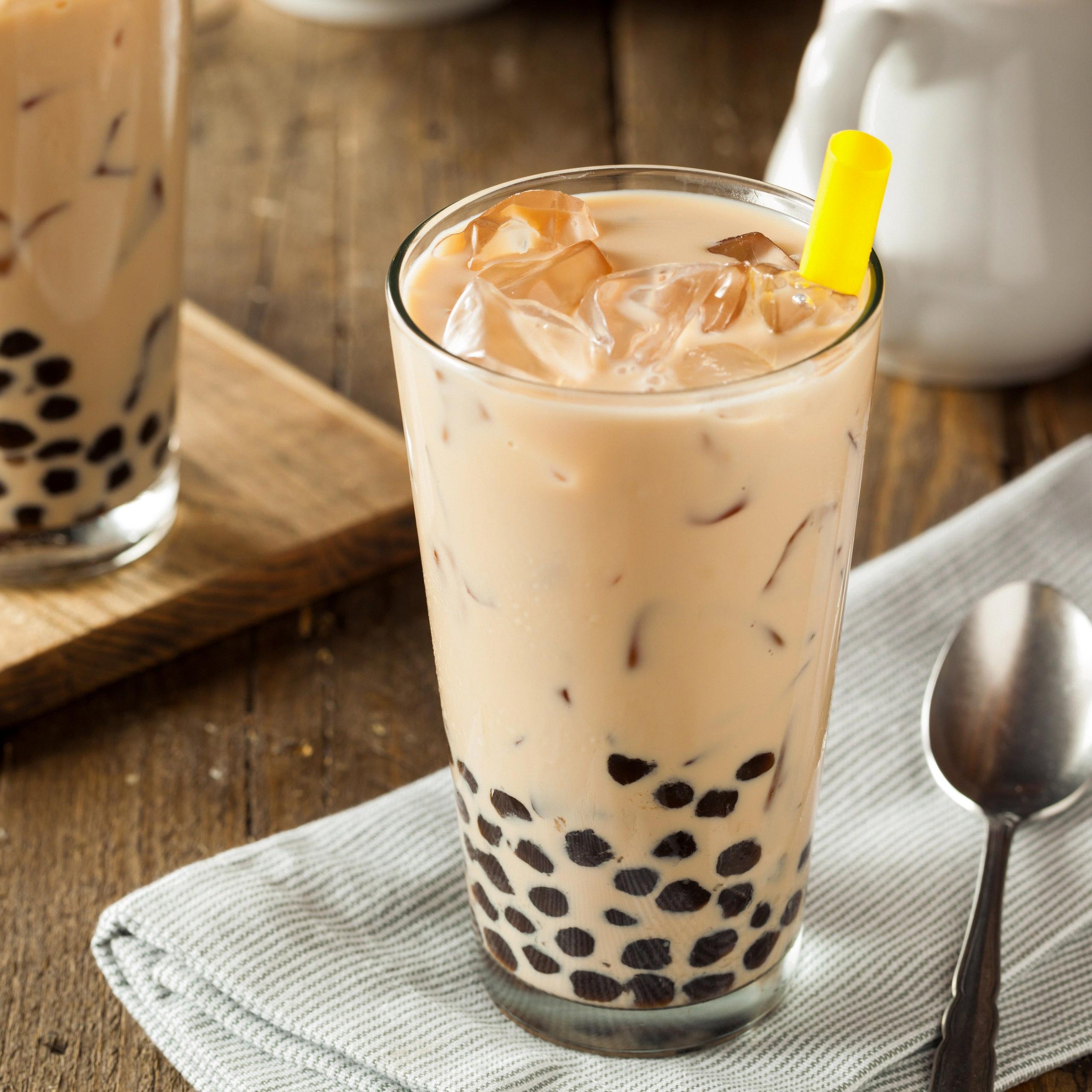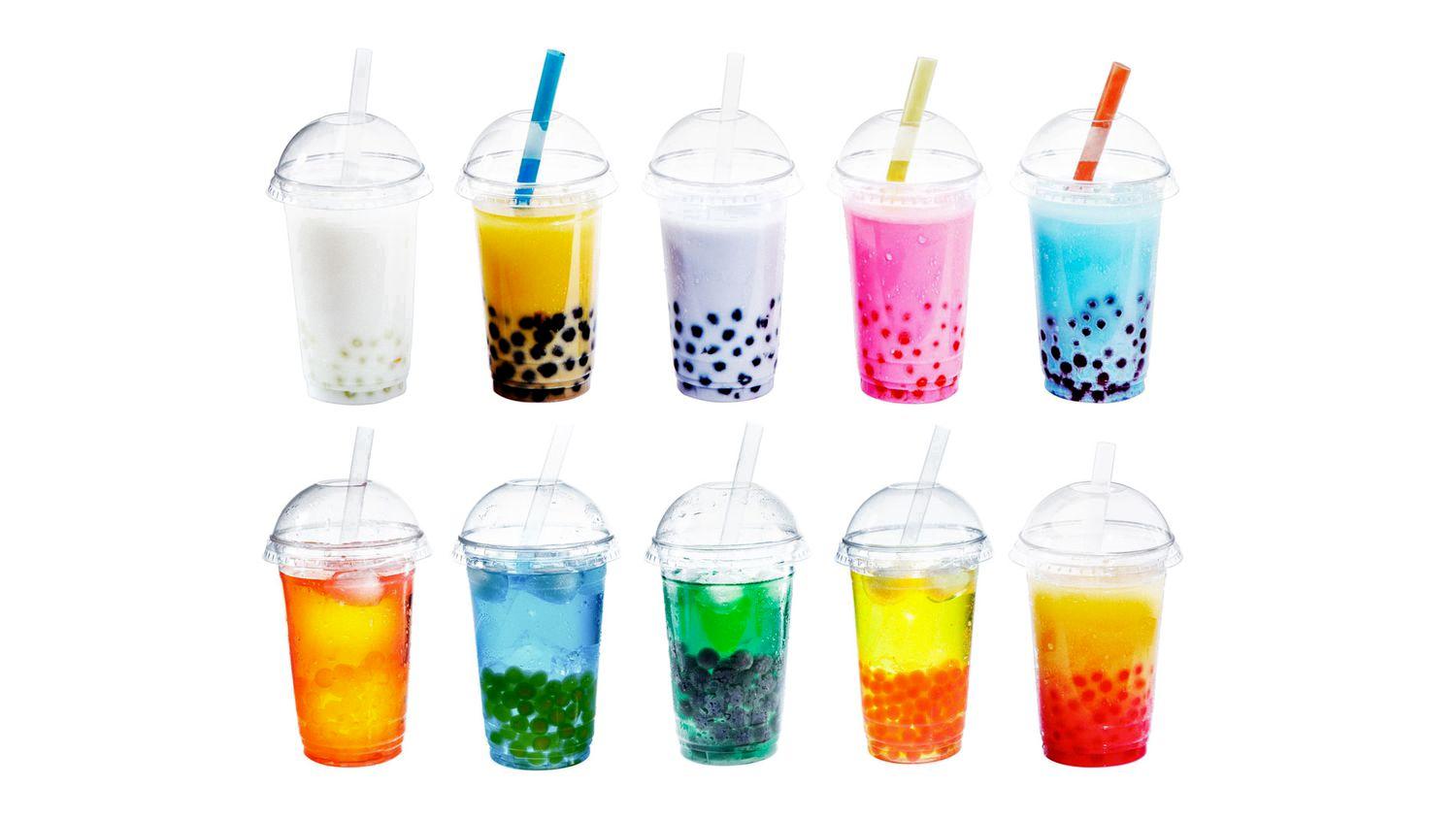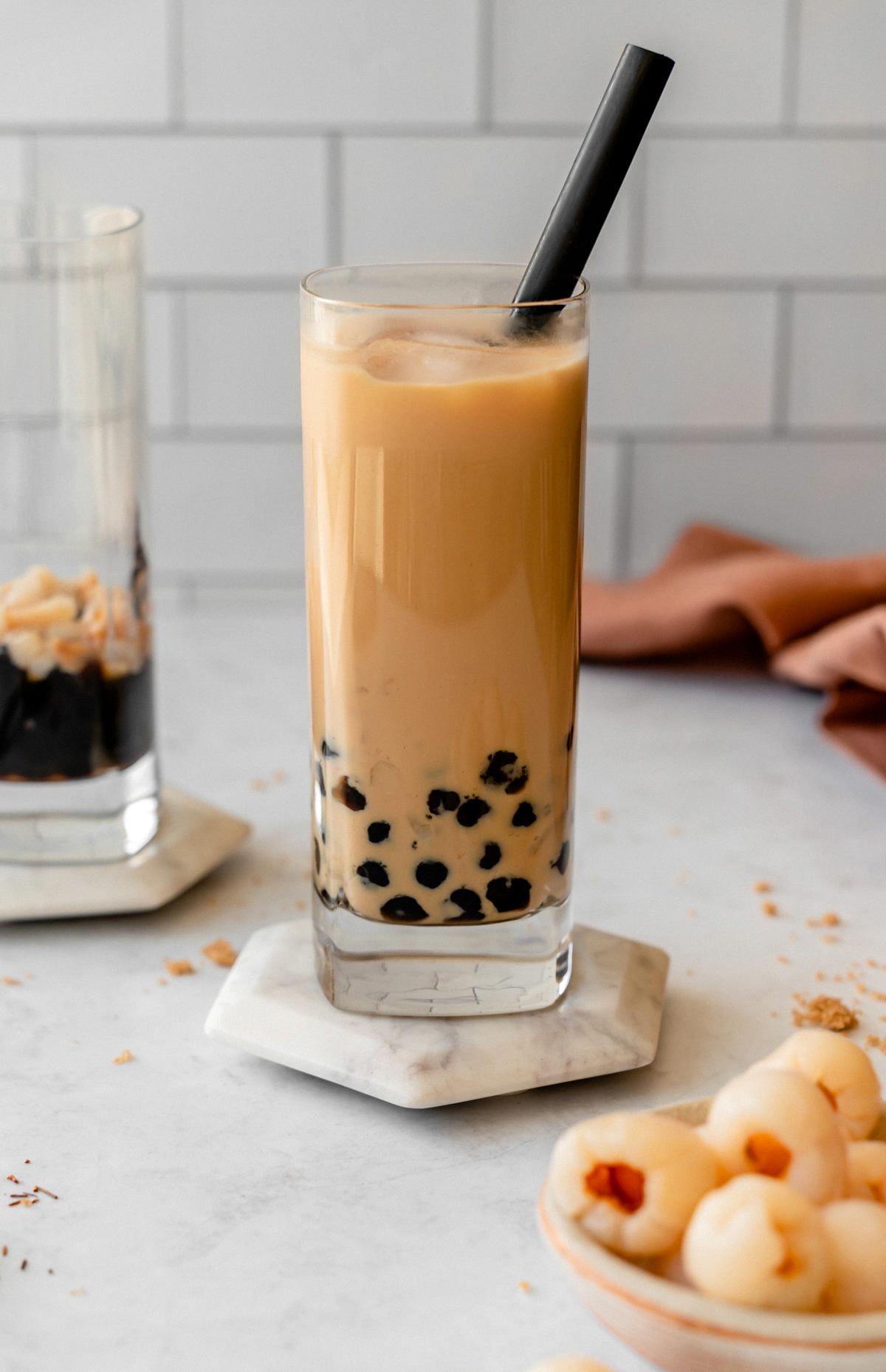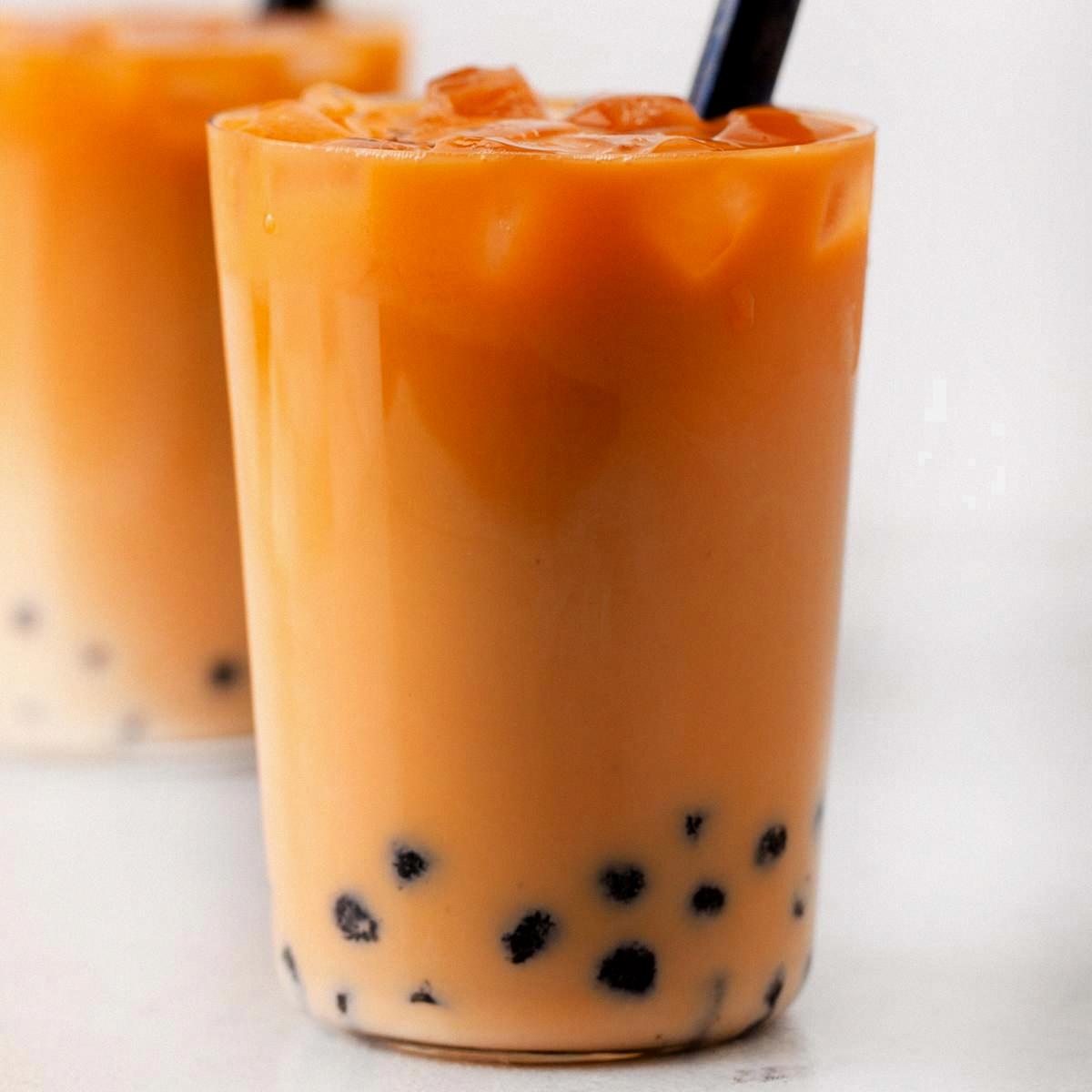If you’re someone who follows a gluten-free diet, you’re likely alwas on the lookout for foods and drinks that fit within your dietary restrictions. One popular beverage that has been gaining popularity in recent years is bubble tea, also known as boba tea. But does boba have gluten? Let’s take a closer look.
First, let’s talk about what exactly boba tea is. Bubble tea originated in Taiwan in the 1980s and has since become a popular drink around the world. It typically consists of a tea base mixed with milk or fruit, and is then shaken with ice and served with tapioca pearls, also known as boba, which are small, chewy spheres made from tapioca starch.
Now, onto the question at hand: is boba gluten-free? The short answer is yes, tapioca pearls and tapioca flour are both naturally gluten-free. Tapioca starch comes from the cassava plant, which is a vegetable and does not contain gluten. This makes it a safe option for those with celiac disease or gluten intolerance.
However, it’s important to note that not all boba shops or packaged boba products are created equal. Some shops may use additives or thickeners in their tapioca pearls that contain gluten, so it’s always important to ask the staff about the ingredients or check the packaging for any gluten-containing ingredients.
Additionally, some boba tea flavors may contain gluten-containing ingredients such as cookie crumbs or malt powder. It’s always best to ask about the ingredients or check the menu for any potential allergens before ordering.
If you’re making bubble tea at home, be sure to use gluten-free ingredients such as tapioca pearls and tapioca flour. You can also experiment with different flavors and ingredients to create your own gluten-free boba drinks.
Boba tea is a gluten-free beverage as long as the tapioca pearls and other ingredients used are gluten-free. As always, it’s important to be mindful of potential allergens and to ask about ingredients before ordering or consuming any food or drink.
Is Tapioca Pearls Gluten-Free?
No, tapioca pearls are naturally gluten-free. They are made from cassava root, which is a starchy tuber that does not contain gluten. Gluten is a protein found in wheat, barley, and rye, and tapioca pearls do not contain any of these grains. Therefore, tapioca pearls are a great option for people who have celiac disease or gluten sensitivity and need to follow a gluten-free diet. Additionally, tapioca pearls are often used in gluten-free baking and cooking as a substitute for wheat flour or other gluten-containing thickeners.

Source: epicurious.com
Does Bubble Tea Contain Gluten?
Bubble tea pearls, also known as tapioca balls or boba, are a popular ingredient in bubble tea drinks. The good news is that tapioca balls are generally considered gluten-free. Tapioca is a starchy substance that comes from the roots of the cassava plant, which is a vegetable. Tapioca balls are made from tapioca starch, which is extracted from the cassava root. This means that they do not conain any gluten from wheat, barley, or rye.
However, it’s important to note that not all bubble tea pearls are created equal. Some manufacturers may add other ingredients to the tapioca balls, such as wheat flour or other gluten-containing additives. Additionally, tapioca balls may be processed in facilities that also process gluten-containing ingredients, which can lead to cross-contamination.
To ensure that your bubble tea pearls are gluten-free, it’s important to check the ingredients label or ask the staff at the bubble tea shop about the ingredients used in their tapioca balls. If you’re making bubble tea at home, make sure to purchase tapioca balls that are labeled as gluten-free and from a trusted source. By doing so, you can enjoy your bubble tea without worrying about gluten.
Can People with Celiac Disease Eat Tapioca?
Yes, tapioca is safe for people with celiac disease as it is naturally gluten-free. It is made from the extracted starch of the cassava plant, which does not contain gluten. Tapioca flour is a popular ingredient in gluten-free baking and cooking as it provides a starchy, slightly sweet taste and a unique texture to dishes. However, it is essential to ensure that the tapioca product you are using is not cross-contaminated with gluten during processing. Always check the label or contact the manufacturer to confirm that the product is certified gluten-free.
Is Boba Made From Wheat?
No, boba, also known as bubble tea pearls, are not made of wheat. They are typically made from cassava root, a starchy tuber, which is also known as tapioca. Cassava root is peeled, ground into a fine powder, and then processed into small, chewy balls. These balls are then boiled and soaked in a syrup or sugar solution to add flavor and sweetness. While some variations of boba may contain wheat flour or other ingredients, traditional boba is gluten-free and made solely from cassava root.
Does Boba Tea Contain Flour?
Yes, boba tea does contain flour, specifically tapioca flour which is made from tapioca starch. The flour is formed into small, chewy balls called boba, which are added to the tea drink. These boba balls are what give the drink its unique texture and are a signature component of boba tea. The tapioca flour is kneaded, cut into small pieces, rolled into balls, and boiled until it becomes the soft, chewy boba balls that are added to the tea. So, while boba tea does contain flour, it is not the same type of flour used in traditional baked goods, but rather a special kind of flour made from tapioca starch.

Source: foodandwine.com
What Ingredients Are Used to Make Boba?
Boba, also known as bubble tea or pearl milk tea, is a popular Taiwanese beverage that typically consists of tea, sugar, milk, and chewy tapioca balls. The boba pearls themslves are made from tapioca starch, which is extracted from the cassava root. This means that boba is a vegan-friendly drink option, as gelatin is not used in the making of these tiny balls of deliciousness. The tapioca starch is mixed with water and kneaded into a dough-like consistency, which is then rolled into small balls and cooked in boiling water. The cooked boba pearls are then soaked in a sweet syrup or honey to add flavor and sweetness. These chewy, soft, and slightly sweet boba pearls are what make bubble tea so unique and enjoyable.
Is Boba Vegan and Gluten-Free?
Yes, boba is typically vegan and gluten-free. The main ingredient in boba pearls is tapioca starch, which is derived from the cassava plant and is naturally gluten-free. Additionally, most boba shops use a simple syrup to sweeten the boba, which is usually vegan-friendly as it is made from sugar and water. However, it is important to note that some boba shops may use non-vegan syrups or add-ins, such as honey or milk, so it is always best to double-check with the shop or read the ingredients list before ordering. Overall, boba is a great option for tose following a vegan or gluten-free diet, but it’s always important to confirm the ingredients to ensure it fits within your dietary restrictions.
Does Taro Contain Gluten?
No, Taro does not have gluten. Taro tuber and roots are naturally gluten-free, which makes them a great option for people with celiac disease or gluten intolerance. Gluten is a protein found in wheat, barley, and rye, but not in taro. So, if you are looking for a gluten-free alternative to wheat-based foods, taro can be a great option. In fact, many gluten-free recipes use taro flour as a substitute for wheat flour. Therefore, you can enjoy the many health benefits of taro without worrying about any gluten-related health issues.
Is Tapioca Pudding Mix Gluten-Free?
Yes, tapioca pudding mix is gluten-free. Tapioca is a starch extracted from the root of the cassava plant, and it does not contain gluten. However, it’s important to note that some brands of tapioca pudding mix may include gluten-containing ingredients like wheat flour or maltodextrin, which is derived from corn but may be processed in facilities that also process gluten-containing grains. Therefore, it’s alwas a good idea to check the ingredient list on the packaging to ensure that the tapioca pudding mix is truly gluten-free. If you have any doubts or questions, you can also contact the manufacturer for more information.

Source: balancewithjess.com
Are McDonald’s Fries Gluten-Free?
Yes, the fries at McDonald’s are gluten-free. McDonald’s cooks their fries in a separate fryer from their gluten-containing items, making them safe for people with celiac disease or gluten sensitivities to consume. While there has been some debate about the possibility of cross-contamination during the frying process, McDonald’s maintains that their fries are gluten-free and safe to eat. It is important to note that while the fries themselves do not contain gluten, they are fried in oil that may also be used to fry items that contain gluten. Therefore, individuals with severe gluten allergies should exercise caution and consult with their healthcare provider before consuming any food from McDonald’s or any othr restaurant.
Does Mochi Contain Gluten?
Mochi, also known as sweet rice cake, is made from mochigome rice, which is a type of short-grain, glutinous rice. Despite the name, mochigome rice is actually naturally gluten-free. However, the problem lies in the production process, as cross-contamination can occur during milling, processing, and packaging. This means that unless your mochi is specifically labeled as gluten-free, there is a risk of it containing gluten. It’s important for those with gluten sensitivities or celiac disease to read labels carefully and look for products that are certified gluten-free to avoid any potential health risks.
Are Mango Pearls Gluten-Free?
Yes, Mango pearls are gluten-free. Boba Barista’s Popping Pearls are made with tapioca starch and other plant-based ingredients, which are naturally gluten-free. They do not contain any wheat, barley, or rye, which are the grains that contain gluten. Therefore, if you have gluten sensitivity or celiac disease, you can safely enjoy Boba Barista’s Mango Popping Pearls without worrying about gluten. Additionally, these pearls are also vegan-friendly, caffeine-free, and halal, making them a great option for people with various dietary restrictions. Just remember to refrigerate the pearls after opening and consume them within two weeks of opening for best quality.
Is Boba Made with Tapioca Starch or Flour?
Boba, also known as tapioca pearls, is made from tapioca starch, not flour. Tapioca starch is extracted from the cassava root, which is native to South America, and is a gluten-free ingredient commonly used in Asian cuisine. The tapioca starch is mixed with water to form a dough, which is then rolled into small balls and cooked in boiling water until they become soft and chewy. The resulting boba pearls are then rinsed in cold water, coated in a sweet syrup, and added to various drinks, such as bubble tea or smoothies. It’s important to note that while tapioca flour exists, it’s not the same as tapioca starch and canot be used interchangeably in boba recipes.

Source: ohhowcivilized.com
Is Boba Made From Rice Flour?
No, boba is not made of rice flour. Instead, it is made of tapioca starch, which comes from the cassava root. Tapioca starch is a type of gluten-free flour that is commonly used in many Asian desserts and dishes. Brown sugar is added to the tapioca starch to give the boba pearls thir characteristic color. Water is then mixed with the tapioca starch and brown sugar to form a dough, which is then rolled into small balls. These balls are then boiled until they become soft and chewy. Finally, the boba pearls are coated with brown sugar syrup to prevent them from sticking together. In summary, boba is made of tapioca starch, brown sugar, and water, and not rice flour.
The Difference Between Bubble Tea and Boba
Bubble tea and boba are often used interchangeably, but they refer to two different things. Bubble tea is a Taiwanese tea-based drink that is typically made with black tea or green tea, milk, sugar, and ice. It can also be made with fruit teas or blended with fruit flavors. The drink is usually served with chewy tapioca pearls, which are often referred to as boba balls, that add a unique texture to the drink.
Boba, on the other hand, specifically refers to the tapioca pearls that are used as a topping in bubble tea drinks. These small, translucent balls are made from cassava root starch and are cooked in boiling water until they becme soft and chewy. They are then added to the bottom of the drink, and a wide straw is used to suck them up while drinking the tea.
So, in summary, bubble tea is a type of tea-based drink that can be made with milk or fruit flavors, and boba refers specifically to the tapioca pearls that are added to the drink as a topping. Both bubble tea and boba have become popular drinks around the world, with many different variations and flavors available.
Conclusion
In conclusion, boba or bubble tea is a popular beverage that is enjoyed by many. It is made with a variety of ingredients, including tapioca pearls, which are the small, chewy balls found at the bottom of the drink. Luckily for those with gluten sensitivities or allergies, tapioca pearls and tapioca flour are naturally gluten-free. Tapioca pearls are made from cassava root starch, which is a vegetable and contans no gluten. Tapioca flour, which is used to create the bubbles in bubble tea, is also gluten-free. However, it’s important to verify the tapioca balls are gluten-free when ordering or purchasing them to make boba tea at home, as some may contain gluten due to cross-contamination during production. Overall, boba is an excellent choice for those following a gluten-free diet, as long as the tapioca pearls are verified gluten-free.
